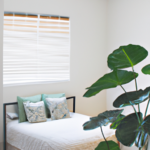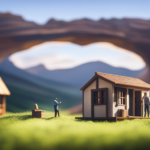Beginners Guides
How Long To Build Tiny Cob House
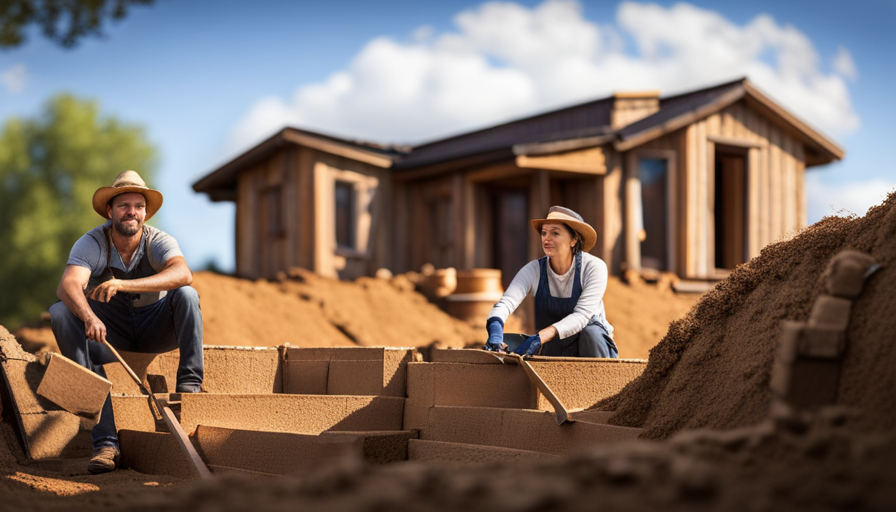
Constructing a small cob home involves significant commitment and passion. It necessitates meticulous preparation, accurate implementation, and an attention to detail. Starting with grasping the fundamentals of cob building to relishing the end product, each phase of the journey provides a chance to fashion a distinctive and eco-friendly dwelling.
As an experienced builder, I know that time is of the essence when it comes to constructing a tiny cob house. With proper organization and a clear vision, you can complete this project in a reasonable timeframe. In this article, I will guide you through the process of building a tiny cob house, step by step. From gathering materials and preparing the site to installing doors and windows, I will share my knowledge and expertise to ensure that your journey to a cozy and environmentally-friendly home is a smooth one.
So let’s dive in and discover just how long it takes to build a tiny cob house!
Key Takeaways
- Cob construction requires careful planning, precise execution, and attention to detail.
- The timeline for building a tiny cob house can vary from a few weeks to a few months.
- Sustainable considerations include choosing cob and salvaged/reclaimed materials and implementing off-grid systems.
- Design and layout are important for maximizing space, storage solutions, and efficient electrical and plumbing systems.
Understanding the Basics of Cob Construction
So, you’re probably wondering how long it takes to build a tiny cob house, huh? Well, let me break it down for you.
Cob construction techniques have been around for centuries and involve using a mixture of clay, sand, and straw to create sturdy walls. One of the benefits of building with cob is that it’s a sustainable and low-cost material, making it ideal for those looking for an eco-friendly alternative.
When it comes to the actual construction process, the timeline can vary depending on factors such as the size of the house and the experience of the builders. Generally, building a tiny cob house can take anywhere from a few weeks to a few months. This includes gathering the necessary materials, preparing the foundation, mixing the cob, and building the walls.
Of course, the process doesn’t stop there. Planning and designing your tiny cob house is just as important as the construction itself. This involves thinking about the layout, choosing the right materials, and considering any additional features you may want to include.
So, now that you understand the basics of cob construction and the benefits of building with cob, let’s dive into the next step of planning and designing your tiny cob house.
Planning and Designing Your Tiny Cob House
First, you’ll need to carefully plan and design your charming little dwelling – but have you ever imagined the bliss of living in a home that perfectly blends with nature? As you embark on the journey of building your tiny cob house, it’s important to consider sustainable building materials and maximize space and storage solutions.
Choosing sustainable building materials is essential in creating an eco-friendly and low-impact home. Cob, a mixture of clay, sand, and straw, is an excellent choice as it’s abundant, natural, and provides excellent insulation. Additionally, opting for salvaged or reclaimed materials for flooring, windows, and doors can further reduce your ecological footprint. By incorporating these materials, you can create a beautiful and environmentally conscious home.
Maximizing space and storage solutions is crucial in a tiny cob house. Since square footage is limited, careful planning is necessary to ensure every inch is utilized efficiently. Consider incorporating built-in storage solutions such as shelves, cabinets, and drawers to maximize vertical space. Additionally, utilizing multipurpose furniture, like a bed with storage underneath or a foldable dining table, can help save space.
With your design and plans in place, the next step is gathering materials and preparing the site. By carefully considering sustainable building materials and maximizing space and storage solutions, you can create a tiny cob house that’s not only harmonious with nature but also functional and efficient.
Gathering Materials and Preparing the Site
To create an environmentally friendly and efficient dwelling, it’s crucial to gather the necessary materials and properly prepare the site.
When it comes to choosing sustainable materials for your tiny cob house, there are a few key considerations. Firstly, look for materials that are locally sourced, reducing the carbon footprint associated with transportation. Opt for natural materials like clay, sand, and straw, which are abundant and have minimal environmental impact. Additionally, consider using salvaged or recycled materials for things like windows, doors, and fixtures, further reducing waste.
Once you’ve gathered your materials, it’s time to prepare the site for cob construction. This involves excavation and foundation work. Start by clearing the area of any vegetation or debris. Next, level the ground and mark out the dimensions of your tiny cob house. Excavate the foundation trenches, ensuring they’re deep enough to provide stability. Use a level to ensure the trenches are even and properly sloped for drainage.
With the site prepared, you’re now ready to move on to building the walls.
Building the Walls
One important aspect of constructing an environmentally friendly dwelling is the process of erecting the walls, which can be done using sustainable materials such as clay, sand, and straw. These building techniques not only reduce the carbon footprint but also provide a strong and durable structure.
To begin building the walls, the first step is to create a solid foundation. This ensures stability and prevents any future issues. Once the foundation is in place, I mix the clay, sand, and straw in the correct proportions to create a cob mixture. This mixture is then applied layer by layer to form the walls. It’s important to ensure that each layer is compacted properly to avoid any cracks or weak spots.
One of the advantages of cob construction is its low maintenance requirements. The walls are naturally insulated, keeping the interior cool in the summer and warm in the winter. Additionally, the clay and straw mixture is resistant to pests and fire, reducing the need for regular repairs and replacements.
As I finish building the walls, I can already envision how cozy and sustainable this tiny cob house will be. With the walls complete, the next step is constructing the roof, which will further enhance the durability and energy efficiency of this environmentally friendly dwelling.
Constructing the Roof
Imagine the sense of accomplishment as you carefully piece together the elements of your dream eco-friendly dwelling, starting with the roof.
Constructing the roof is a crucial step in the building process, as it provides protection from the elements and adds structural integrity to your tiny cob house.
When it comes to choosing roofing materials, there are several options to consider. One popular choice is metal roofing, which is durable, long-lasting, and environmentally friendly.
Another option is thatched roofing, which gives your cob house a rustic and natural look. However, it requires regular maintenance to prevent leaks and damage.
Additionally, you can opt for a more traditional approach and use asphalt shingles, which are affordable and easy to install.
Whichever roofing material you choose, make sure it complements the overall aesthetic of your cob house and meets your budget and sustainability goals.
With the roof in place, you can move on to the next step of installing electrical and plumbing systems seamlessly, ensuring your tiny cob house is both functional and beautiful.
Installing Electrical and Plumbing Systems
When it comes to installing electrical and plumbing systems in a tiny cob house, two key points to consider are designing the layout for efficiency and functionality, as well as connecting to utilities or using off-grid solutions.
As an experienced builder, I always prioritize designing a layout that maximizes space utilization and ensures easy access to electrical outlets and plumbing fixtures. Additionally, I have expertise in both connecting to existing utilities and implementing off-grid systems such as solar panels and rainwater collection, depending on the homeowner’s preferences and location.
Designing the Layout for Efficiency and Functionality
To maximize efficiency and functionality, it’s essential to carefully design the layout of a tiny cob house. Efficient storage solutions are key in a small space, so I strategically plan the placement of cabinets, shelves, and built-in storage units.
Utilizing vertical space with high shelves and wall-mounted organizers helps maximize storage capacity. Additionally, I prioritize maximizing natural light by strategically placing windows and skylights throughout the house. This not only creates a bright and airy atmosphere but also reduces the need for artificial lighting during the day.
By carefully considering the placement of each element in the layout, I ensure that the tiny cob house is not only efficient and functional but also aesthetically pleasing.
Transitioning into the next section, connecting to utilities or using off-grid solutions, I focus on seamlessly integrating these systems into the overall design.
Connecting to Utilities or Using Off-Grid Solutions
In order to seamlessly integrate utilities or off-grid solutions into your tiny cob home, consider the most efficient and visually appealing ways to connect to essential systems.
When it comes to off-grid water solutions, options such as rainwater harvesting or installing a well can provide a sustainable and self-sufficient water source.
Additionally, incorporating solar power options can help reduce reliance on the grid and decrease energy costs. Installing solar panels on the roof or utilizing portable solar generators can provide clean and renewable energy for your tiny cob home.
With careful planning and design, these off-grid solutions can be seamlessly integrated into the overall aesthetic of your home.
Transitioning into the subsequent section about finishing touches and interior design, it’s important to create a cohesive and comfortable living space that reflects your personal style and preferences.
Finishing Touches and Interior Design
With a touch of creativity and a keen eye for design, you can transform your tiny cob house into a cozy and inviting space. Here are a few tips to help you put the finishing touches on your interior design:
-
Interior Color Schemes: Choose a color palette that reflects your personal style and creates a sense of harmony in your space. Consider using light, neutral tones to make your tiny cob house feel larger and more open.
-
Space-Saving Furniture: In a small space, it’s important to maximize functionality without sacrificing style. Look for furniture pieces that serve multiple purposes, such as a sofa that doubles as a pull-out bed or a coffee table with hidden storage compartments.
-
Thoughtful Placement: Every inch counts in a tiny cob house, so be strategic with your furniture arrangement. Create designated areas for different activities, such as a cozy reading nook or a compact dining area. Utilize vertical space by installing shelves or hanging organizers.
By paying attention to interior color schemes, incorporating space-saving furniture, and thoughtfully arranging your belongings, you can make the most of your tiny cob house.
Next, we’ll discuss the installation of doors, windows, and flooring to complete your home’s construction.
Installing Doors, Windows, and Flooring
Once the interior design of your cozy cob home is complete, it’s time to focus on the installation of doors, windows, and flooring to add the final touches. Choosing eco-friendly doors and windows is not only beneficial for the environment but also enhances the overall aesthetic appeal of your tiny cob house. Consider options that are made from sustainable materials and have high energy efficiency ratings. Installing large, glass sliding doors can create a seamless connection between your indoor and outdoor spaces. Imagine enjoying the view of a picturesque garden while natural light floods your living space, creating a warm and inviting atmosphere.
When it comes to selecting the right flooring material for a tiny cob house, durability and sustainability should be your top priorities. Opt for materials that can withstand the wear and tear of daily use, such as bamboo or reclaimed wood. These materials not only add a touch of natural beauty but also have a low environmental impact.
To give you a better idea of the options available, here is a table showcasing some eco-friendly doors, windows, and flooring materials:
| Doors | Windows | Flooring |
|---|---|---|
| Recycled wood | Double-glazed glass | Bamboo |
| Reclaimed barn doors | Low-E glass | Cork |
| Salvaged French doors | Fiberglass | Reclaimed wood |
Once the doors, windows, and flooring are in place, you can move on to the next step of testing and inspecting your cob house to ensure everything is in perfect order. Transitioning seamlessly into this phase will help you achieve a cozy and sustainable living environment without skipping a beat.
Testing and Inspecting Your Cob House
Now it’s time to test and inspect your cozy cob home to ensure it’s in perfect order for your cozy and sustainable living environment.
Testing techniques are crucial in evaluating the durability of your tiny cob house. Begin by inspecting the walls for any cracks or signs of weakness. Tap the walls gently using a rubber mallet to listen for any hollow sounds, indicating potential air pockets or structural issues. Additionally, carefully examine the cob mixture used in your walls, checking for proper adhesion and consistency.
Next, test the windows and doors for proper installation and functionality. Open and close each window and door multiple times to ensure they operate smoothly without any obstructions or misalignments. Check for any gaps or drafts around the frames, as these can compromise the energy efficiency of your home.
Inspect the flooring for stability and evenness. Walk around the entire space, paying attention to any squeaking or unevenness underfoot. Also, check for any cracks or shifting in the cob floor, as these can indicate potential structural problems.
Once you have thoroughly tested and inspected your tiny cob house, you can move on to enjoying your cozy and sustainable living space. Transitioning into the subsequent section, you’ll discover how to make the most of your charming abode.
Enjoying Your Tiny Cob House
Get ready to embrace the cozy charm of your little cob home and create lasting memories in your sustainable haven. Living in a tiny cob house is a unique experience that requires some adjustments, but with a few tips, you can maximize the space and create a sustainable lifestyle.
Here are three essential tips for maximizing space in your tiny cob house:
-
Utilize vertical space: In a small space, it’s crucial to make use of every inch available. Install shelves and storage units on walls to keep your belongings organized and off the floor. Hang pots and pans from the ceiling to free up cabinet space in the kitchen.
-
Choose multi-functional furniture: Opt for furniture pieces that serve multiple purposes. For example, a sofa that converts into a bed or a coffee table with hidden storage compartments. This way, you can make the most of your limited space without sacrificing comfort.
-
Embrace minimalism: Living in a tiny cob house encourages a simpler lifestyle. Embrace minimalism by decluttering regularly and only keeping items that serve a purpose or bring you joy. This not only maximizes space but also creates a more sustainable and mindful living environment.
Creating a sustainable lifestyle in your tiny cob house is also essential. Use eco-friendly materials for repairs and renovations, install energy-efficient appliances, and incorporate natural lighting to reduce energy consumption. Embrace organic gardening and composting to minimize waste and grow your own food.
By following these tips and embracing a sustainable lifestyle, you can fully enjoy and make the most of your tiny cob house.
Frequently Asked Questions
How much does it cost to build a tiny cob house?
To get a cost estimate for building a tiny cob house, several factors need to be considered. These factors include materials, labor, and location. The construction timeline will also vary depending on these factors. However, in my experience, building a tiny cob house can cost anywhere from $5,000 to $20,000. The construction timeline usually ranges from a few weeks to a few months, depending on the complexity of the design and the availability of resources.
Can I build a tiny cob house on my own or do I need professional help?
Building a tiny cob house on your own can be an adventurous and fulfilling experience, but it also comes with its challenges. While it may seem tempting to tackle the project solo, hiring professionals can save you time and ensure a high-quality result.
DIY cob house construction allows for creative freedom and cost savings, but it requires extensive research, planning, and physical labor. Consider your skill level, available time, and budget before deciding on the best approach for you.
Are there any building codes or regulations I need to follow when constructing a tiny cob house?
When constructing a tiny cob house, it’s important to be aware of building codes and regulations. These codes may vary depending on your location, so it’s crucial to research and understand the specific requirements in your area.
Common regulations for constructing a tiny cob house may include minimum square footage, foundation specifications, and electrical and plumbing guidelines. It’s advisable to consult with local authorities or a professional to ensure compliance with these codes and regulations for a safe and legally compliant build.
How long does it take for the cob walls to fully dry and become solid?
The cob house construction timeline can vary depending on various factors, including the weather conditions and the size of the project. When it comes to the cob walls, one of the major challenges is allowing them enough time to dry and become solid.
This process typically takes several weeks to a few months, depending on the thickness of the walls and the climate. It’s important to be patient during this phase to ensure the structural integrity of the walls.
What are the advantages and disadvantages of living in a tiny cob house compared to a traditional house?
Living in a tiny cob house offers several advantages compared to a traditional house. Firstly, cob houses are highly sustainable, as they’re made from natural and locally sourced materials. They have a low carbon footprint and provide excellent thermal insulation.
Additionally, the design and layout of a tiny cob house can be customized to maximize space efficiency and promote a minimalist lifestyle. However, it’s important to consider the potential disadvantages, such as limited space and the need for regular maintenance of the cob walls.
Conclusion
After months of hard work and dedication, my tiny cob house is finally complete. From the initial planning and designing to gathering materials and preparing the site, every step of the construction process required meticulous attention to detail.
The walls were built with love and care, and the roof was carefully crafted to ensure durability and protection. With the finishing touches and interior design in place, my cob house has become a sanctuary of comfort and sustainability.
As I step into my new home, I can’t help but feel a sense of pride and accomplishment. The journey may have been long, but the reward is truly worth it.
Hi, I’m Emma. I’m the Editor in Chief of Tiny House 43, a blog all about tiny houses. While tree houses are often associated with childhood, they can be the perfect adult retreat. They offer a cozy space to relax and unwind, surrounded by nature. And since they’re typically built on stilts or raised platforms, they offer stunning views that traditional homes simply can’t match. If you’re looking for a unique and romantic getaway, a tree house tiny house might just be the perfect option.
Beginners Guides
How Did the City of Fresno to Tiny House
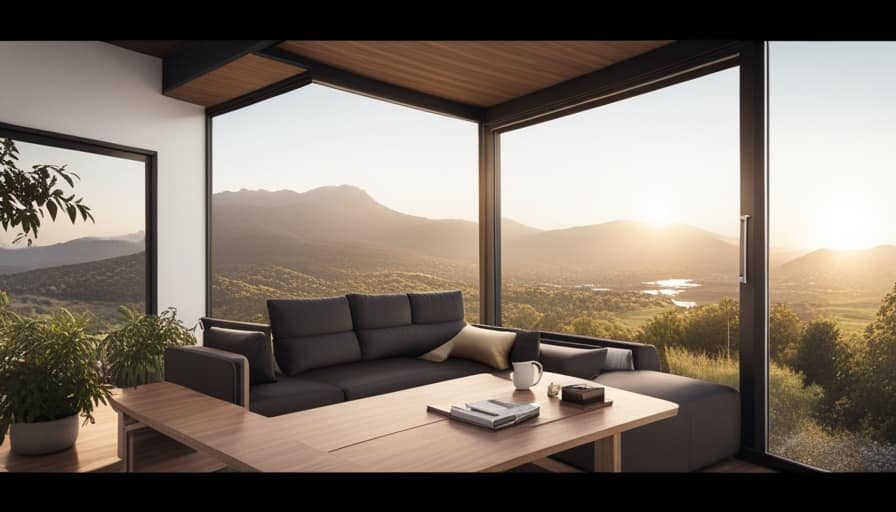
As someone living in Fresno, I have always believed in the saying ‘home is where the heart is.’ Thanks to the city’s forward-thinking housing policies, even the smallest of homes can now have a place to call their own.
In this article, we’ll explore how Fresno has embraced the tiny house movement, collaborating with advocates and implementing innovative zoning regulations. Join me as we delve into the challenges faced and the remarkable progress made towards building a thriving tiny house community in Fresno.
Key Takeaways
- Fresno has implemented housing policies and initiatives aimed at increasing access to affordable housing, including energy-efficient homes and tiny house construction.
- Collaboration with tiny house advocates is crucial for effective housing solutions, as they bring valuable insights and innovative ideas to the table.
- Zoning regulations and permitting processes in Fresno are designed to engage the community and ensure that their needs and preferences are considered.
- Fresno has created innovative tiny house communities that focus on sustainability and affordability, incorporating features such as solar panels and rainwater harvesting systems.
The Shift in Housing Policies
I’m excited to talk about the changes happening in housing policies.
One of the most pressing issues in our society today is housing affordability. Many individuals and families struggle to find affordable housing options, causing financial strain and instability.
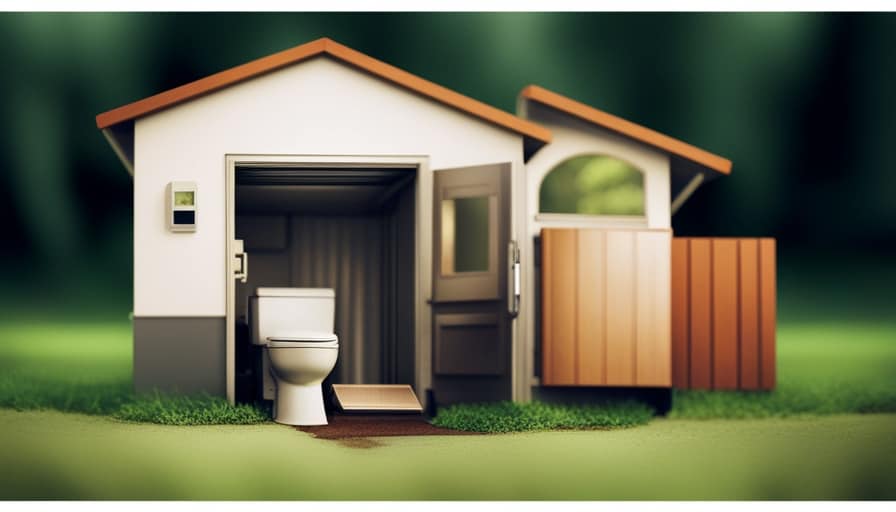
As a result, there’s been a shift in housing policies towards promoting sustainable living and increasing access to affordable housing. Governments and organizations are recognizing the importance of creating housing opportunities that are both environmentally friendly and economically viable.
This involves initiatives such as promoting energy-efficient homes, supporting the construction of tiny houses, and implementing rent control measures.
Collaborating With Tiny House Advocates
Collaborating with tiny house advocates has been crucial in implementing effective housing solutions in the city of Fresno. Through collaboration strategies and community engagement, we’ve been able to work hand in hand with advocates to address the unique challenges and opportunities that tiny houses present.
These collaborations have allowed us to tap into the knowledge and expertise of tiny house advocates, who bring valuable insights and innovative ideas to the table. We’ve engaged in open and transparent dialogues, fostering a sense of trust and understanding between all parties involved.
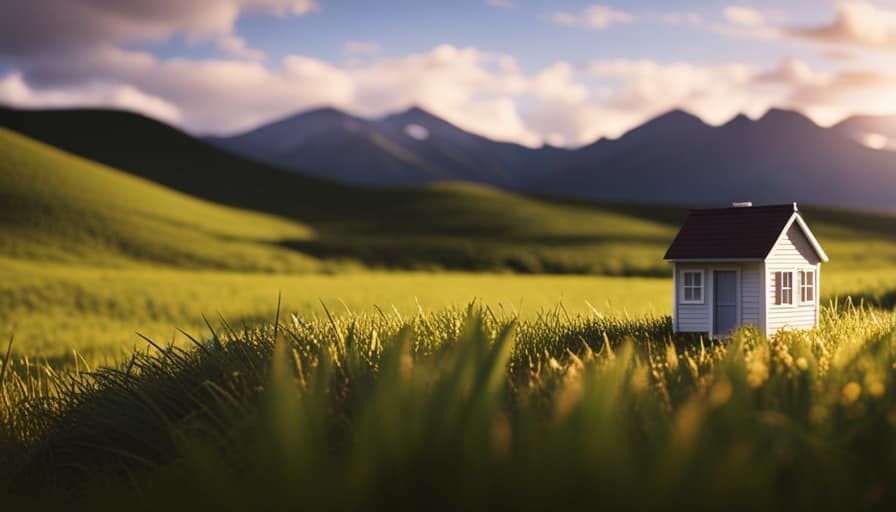
Zoning Regulations and Permitting Processes
Navigating the complexities of zoning regulations and permitting processes can be challenging, but it’s essential for ensuring the successful implementation of tiny house communities in the city of Fresno.
To streamline processes and make it easier for individuals and organizations to develop tiny house communities, the city of Fresno has taken steps to engage with the community and actively involve them in the decision-making process.
This includes hosting public meetings, soliciting feedback, and conducting thorough assessments of potential sites for tiny house communities. By involving the community in these processes, the city of Fresno can address any concerns or issues that may arise, while also ensuring that the needs and preferences of the community are taken into consideration.
This collaborative approach not only helps to build trust and support, but also allows for a more efficient and effective implementation of tiny house communities in the city.
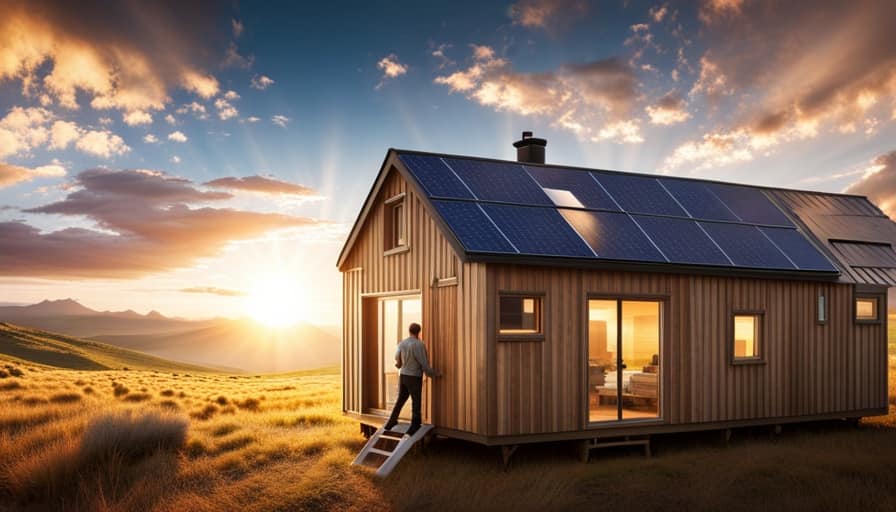
Innovative Tiny House Communities in Fresno
One innovative approach to creating tiny house communities in Fresno is through the use of sustainable materials and renewable energy sources. These communities are designed with a focus on sustainability, incorporating features such as solar panels, rainwater harvesting systems, and energy-efficient appliances. By utilizing these sustainable practices, residents can reduce their carbon footprint and live in homes that are environmentally friendly.
Additionally, these communities aim to provide affordable living options for individuals who may not be able to afford traditional housing. Through the use of smaller, more efficient spaces, the cost of construction and maintenance is reduced, making it more accessible for those on a limited budget.
These innovative tiny house communities in Fresno are paving the way for sustainable housing and promoting affordable living for all.
Transitioning into the next section, let’s explore the challenges faced in building a tiny house movement.
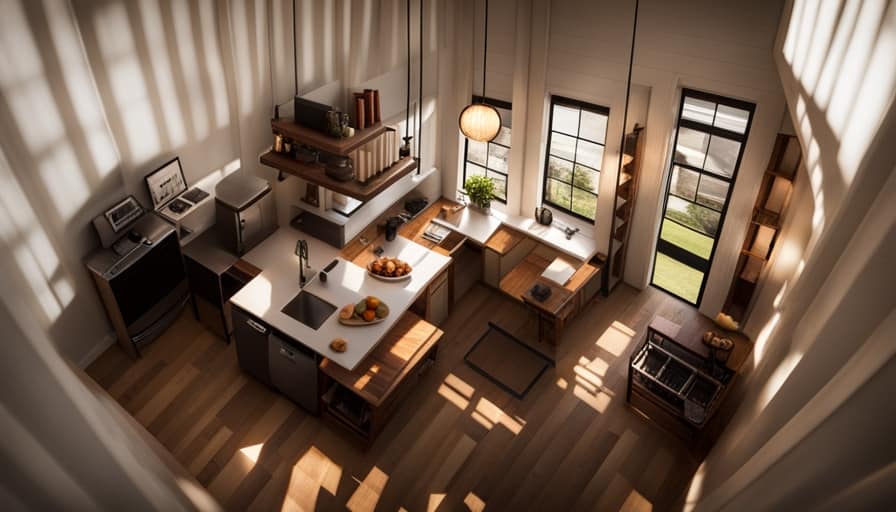
Overcoming Challenges and Building a Tiny House Movement
Confronting obstacles and working together, we can create a thriving tiny house movement in Fresno.
To overcome challenges and build a sustainable and affordable housing solution, we must first address zoning regulations. Currently, many cities have restrictions that make it difficult to build tiny houses on a permanent foundation. By advocating for changes in zoning laws, we can create more opportunities for tiny house communities.
Additionally, we need to address financing options for individuals interested in building tiny houses. Traditional lending institutions may not provide loans for these unconventional homes, so alternative financing options must be explored. Collaborating with local government, community organizations, and financial institutions can help us develop innovative solutions to overcome these challenges.
Frequently Asked Questions
How Long Does It Typically Take to Build a Tiny House?
Typically, it takes around 2-4 months to build a tiny house. The building timeline can vary based on factors like design complexity, availability of materials, and contractor availability. Cost considerations include materials, labor, and permits.
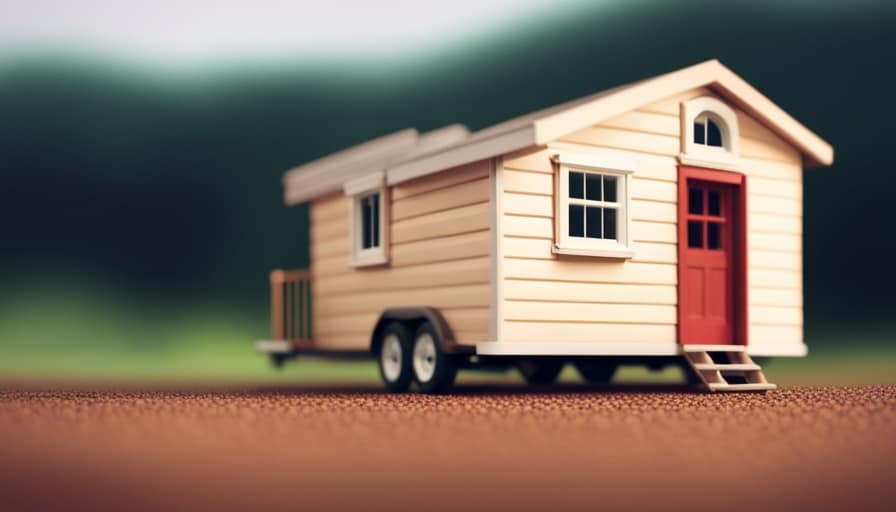
Are There Any Specific Requirements for the Size or Design of a Tiny House in Fresno?
In Fresno, specific requirements exist for the size and design of tiny houses. The city has set guidelines to ensure safety and conformity. Meeting these requirements is crucial to obtaining necessary permits and building a legally compliant tiny house.
Can I Legally Live in a Tiny House on Wheels in Fresno?
Yes, you can legally live in a tiny house on wheels in Fresno. While specific regulations may vary, other cities have implemented tiny house regulations with benefits such as affordability, sustainability, and minimal environmental impact.
How Can I Find Resources and Support for Building My Own Tiny House in Fresno?
Finding local workshops and connecting with tiny house builders in Fresno is crucial for building my own tiny house. Through thorough research and analytical thinking, I can discover resources and support to ensure a successful project.
Are There Any Financial Incentives or Grants Available for Individuals Interested in Building a Tiny House in Fresno?
There are financial assistance programs and grants available for individuals interested in building a tiny house in Fresno. It’s important to familiarize yourself with the building regulations and requirements to ensure compliance.
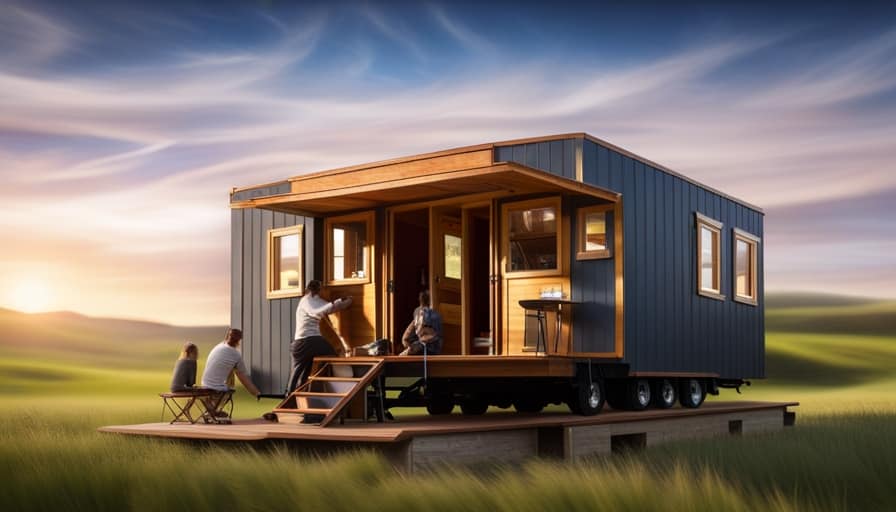
Conclusion
In conclusion, the city of Fresno has successfully embraced the tiny house movement through a shift in housing policies, collaboration with advocates, and innovative communities.
The zoning regulations and permitting processes have been streamlined to accommodate tiny house living. Despite challenges, the city has built a strong foundation for the tiny house movement to thrive.
As the saying goes, "The journey of a thousand miles begins with a single step," and Fresno has taken that step towards a more sustainable and affordable housing solution.
I’m Theodore, and I love tiny houses. In fact, I’m the author of Tiny House 43, a book about tiny houses that are also tree houses. I think they’re magical places where imaginations can run wild and adventures are just waiting to happen.
While tree houses are often associated with childhood, they can be the perfect adult retreat. They offer a cozy space to relax and unwind, surrounded by nature. And since they’re typically built on stilts or raised platforms, they offer stunning views that traditional homes simply can’t match.
If you’re looking for a unique and romantic getaway, a tree house tiny house might just be the perfect option.
Beginners Guides
How Do I Get Rid of Tiny Black Flies in My House

- Health risks associated with tiny black flies in the house
- Effective methods to prevent and control the presence of black flies in homes or gardens
I have tried every possible solution, but those annoying tiny black flies refuse to leave my house!
If you’re dealing with the same frustrating problem, don’t worry – I’ve got you covered.
In this article, I’ll share my expert knowledge on identifying these pesky bugs, understanding the causes of their infestations, and provide you with both natural and chemical remedies to banish them for good.
Say goodbye to those annoying flies and hello to a fly-free home!
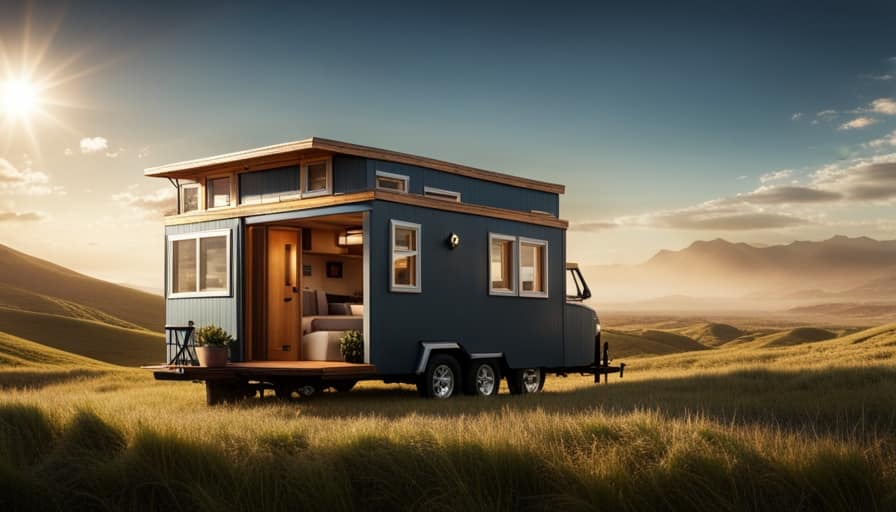
Key Takeaways
- Identify and eliminate breeding grounds by removing standing water and damp areas.
- Use natural remedies like homemade fly traps with apple cider vinegar and essential oils to repel flies.
- Consider using chemical treatments designed to kill black flies, following the instructions carefully.
- Take preventive measures to keep your house clean and free from food or organic debris to prevent future infestations.
Identifying the Tiny Black Flies
I can use a magnifying glass to examine the tiny black flies and determine their species. When it comes to differentiating between fruit flies and black flies, there are a few key characteristics to look out for.
Fruit flies are usually smaller in size, about 1/8 of an inch long, and have a tan or yellowish body with red eyes. On the other hand, black flies are slightly larger, measuring around 1/4 of an inch, and have a dark black or grayish body with dark wings.
Now, let’s move on to controlling and eliminating black flies in outdoor spaces. One effective method is to eliminate their breeding grounds by removing any standing water or damp areas where they can lay their eggs. Regularly emptying and cleaning birdbaths, flower pots, and gutters can help prevent black fly infestations.
Additionally, using insect repellents or installing fine mesh screens on doors and windows can provide some protection against these pesky pests.
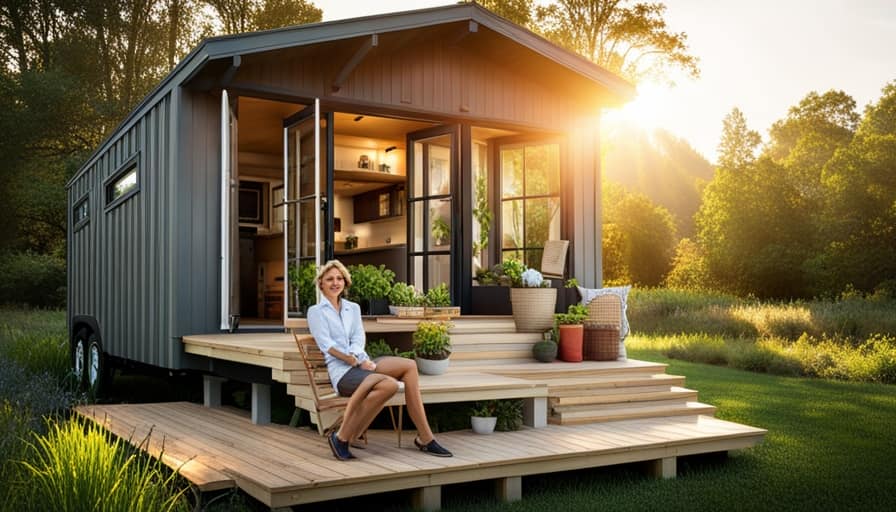
Understanding the Causes of Black Fly Infestations
To understand the causes of black fly infestations, we need to examine their preferred breeding sites and environmental conditions. These tiny pests thrive in moist and decaying organic matter, making the following places common breeding grounds for black flies:
-
Standing water: Black flies lay their eggs in standing water, such as ponds, lakes, and even puddles. It’s crucial to eliminate any stagnant water sources around your house to prevent infestations.
-
Overgrown vegetation: Black flies are attracted to dense vegetation, especially if it’s near water bodies. Trim shrubs, mow your lawn regularly, and remove any overgrown plants to discourage black flies from breeding.
-
Moist organic matter: Black flies lay their eggs in decomposing leaves, grass clippings, and other organic debris. Keep your yard clean and free of debris to reduce the likelihood of black fly infestations.
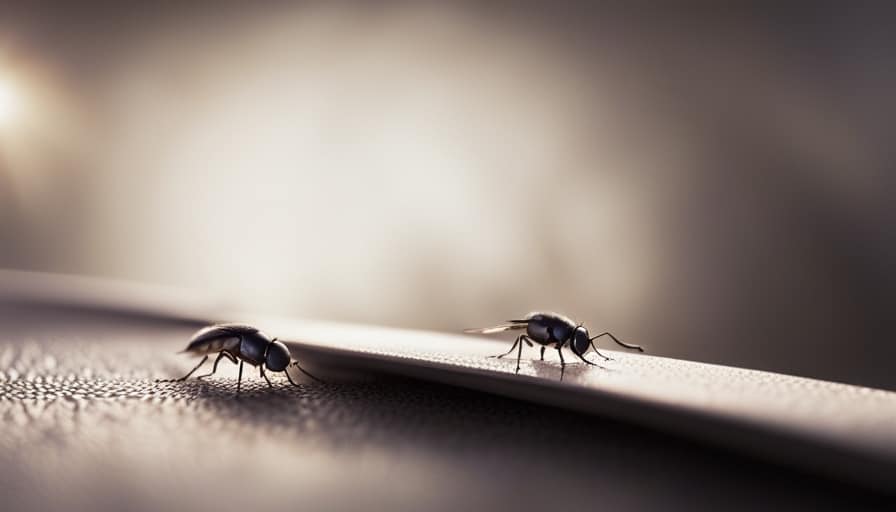
Understanding these common breeding grounds can help you identify and eliminate the causes of black fly infestations, keeping your home fly-free and comfortable.
Natural Remedies to Eliminate Tiny Black Flies
With a combination of proper sanitation and natural remedies, you can effectively eliminate tiny black flies from your house. One effective natural remedy is making homemade fly traps. These traps can be made using common household items such as apple cider vinegar, dish soap, and a plastic bottle. Simply cut the bottle in half, pour a mixture of apple cider vinegar and dish soap into the bottom half, and place the top half of the bottle inverted into the bottom half. The flies will be attracted to the scent of the vinegar, but the dish soap will prevent them from escaping. Another natural remedy is using essential oils for fly control. Oils such as lavender, peppermint, and eucalyptus have strong scents that repel flies. Simply mix a few drops of your chosen oil with water and spray it around areas where flies are present. By incorporating these natural remedies into your fly control routine, you can effectively get rid of tiny black flies in your house.
| Homemade Fly Traps | Essential Oils for Fly Control |
|---|---|
| – Apple cider vinegar and dish soap mixture in a plastic bottle | – Lavender, peppermint, and eucalyptus oils |
| – Flies are attracted to the vinegar scent but trapped by the soap | – Mix a few drops with water and spray in affected areas |
| – Simple and cost-effective solution | – Oils have strong scents that repel flies |
| – Dispose of trapped flies regularly | – Repeat application as needed |
Chemical Treatments for Getting Rid of Black Flies
By using chemical treatments, you can effectively eliminate black flies from your house. Here are three options to consider:
-
Chemical insecticides: These products are specifically designed to kill insects, including black flies. Look for insecticides that are labeled for use against flies and follow the instructions carefully. Apply the insecticide in areas where black flies are commonly found, such as around windows, doors, and other entry points.
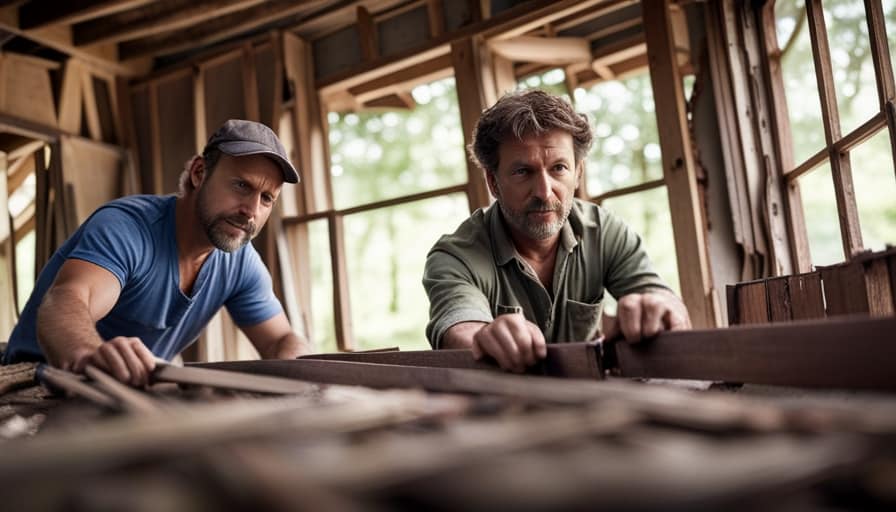
-
Fly traps: There are chemical-based fly traps available that attract and capture black flies. These traps use a combination of chemicals and pheromones to lure the flies in and prevent them from escaping. Place the traps in areas where black flies are present, such as near garbage cans or in the kitchen.
-
Professional exterminator: If you’re dealing with a severe infestation or if chemical treatments haven’t been effective, it may be best to call a professional exterminator. They have access to stronger chemicals and can provide a targeted approach to eliminate black flies from your house.
Remember to always read and follow the instructions on chemical insecticides and traps, and consider the help of a professional if needed.
Preventing Future Infestations of Tiny Black Flies
My best advice for preventing future infestations of tiny black flies in my house is to maintain proper sanitation and eliminate potential breeding grounds.
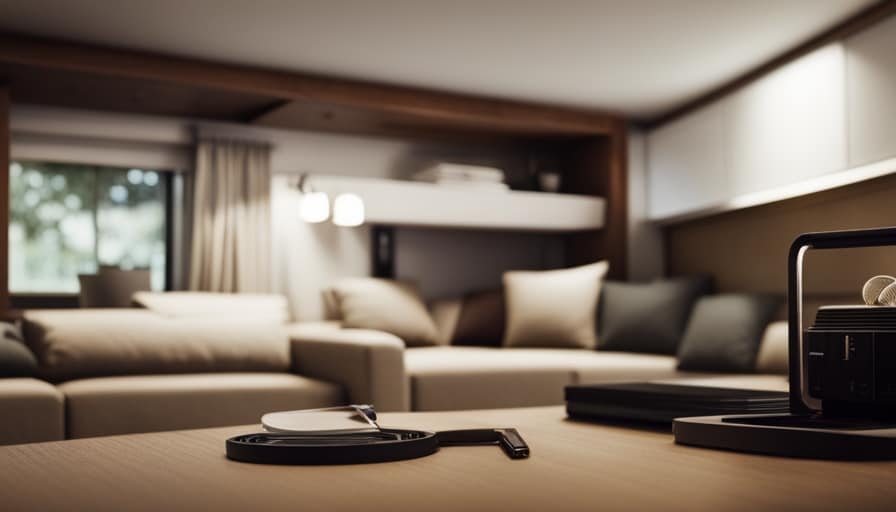
To maintain a fly-free environment, it’s important to keep your house clean and free from any food or organic debris. Make sure to regularly clean your kitchen, especially the countertops, sinks, and garbage disposal areas. Keep all food stored in airtight containers and promptly clean up any spills or crumbs.
Additionally, it’s crucial to identify and eliminate common breeding grounds for black flies in homes. These include standing water, damp areas, and overwatered plants. Regularly check for any leaks or moisture issues and fix them promptly.
Frequently Asked Questions
Can These Tiny Black Flies Harm Humans or Pets?
I’m not an expert, but I can share that tiny black flies in the house might be annoying, but they usually don’t harm humans or pets. It’s always a good idea to take preventive measures to control their presence.
Are There Any Specific Regions or Climates Where These Black Flies Are More Common?
In certain regions and climates, these pesky black flies tend to be more common. Understanding their preferences can help in devising effective strategies to keep them at bay.
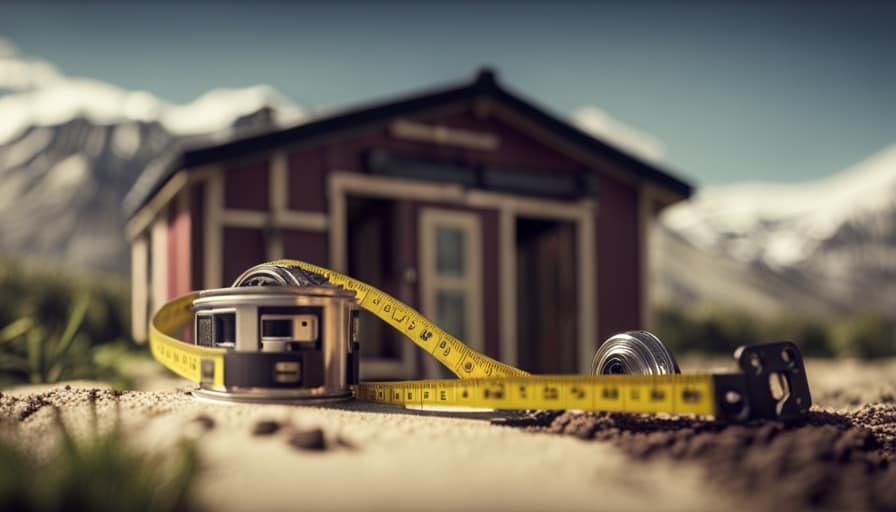
Can These Tiny Black Flies Cause Damage to Plants or Food?
Yes, these tiny black flies can cause damage to indoor plants as they lay their eggs in the soil. They can also contaminate stored food by landing on it and leaving behind bacteria.
How Long Does It Usually Take for Natural Remedies to Effectively Eliminate Black Flies?
On average, natural remedies can effectively eliminate black flies within a few days. However, the exact time may vary depending on the severity of the infestation and the specific remedies used.
Are There Any DIY Traps or Baits That Can Be Used to Catch and Eliminate These Tiny Black Flies?
There are several DIY fly traps and effective baits that can be used to catch and eliminate those pesky tiny black flies. Let me share some knowledge and details on how you can tackle this issue.
Conclusion
So there you have it, a plethora of methods to bid farewell to those pesky tiny black flies that have invaded your humble abode.
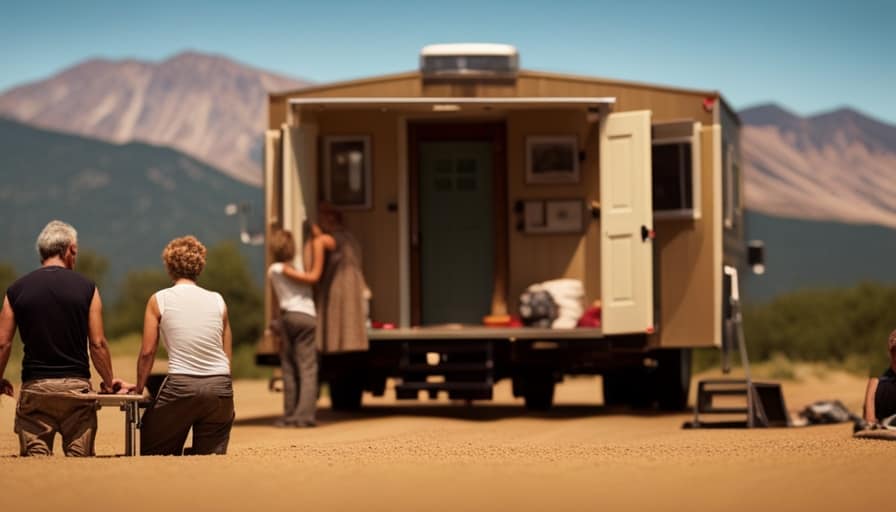
From natural remedies to chemical treatments, we’ve covered it all.
Now, armed with this knowledge, you can take control of your home and ensure these unwelcome guests never return.
Happy fly-free living!
I’m Theodore, and I love tiny houses. In fact, I’m the author of Tiny House 43, a book about tiny houses that are also tree houses. I think they’re magical places where imaginations can run wild and adventures are just waiting to happen.
While tree houses are often associated with childhood, they can be the perfect adult retreat. They offer a cozy space to relax and unwind, surrounded by nature. And since they’re typically built on stilts or raised platforms, they offer stunning views that traditional homes simply can’t match.
If you’re looking for a unique and romantic getaway, a tree house tiny house might just be the perfect option.
Beginners Guides
How Do I Get Rid of Tiny Bugs in My House

I have pests in my home that are causing me frustration! They are like small intruders that are appearing all over the place. However, do not worry, as I have conducted thorough research and found effective solutions to eliminate these bothersome pests.
In this article, I’ll guide you through identifying the types of bugs, understanding the causes of infestations, and providing natural and chemical remedies to eliminate them.
Say goodbye to those unwelcome guests and hello to a bug-free home!
Key Takeaways
- Identifying the specific pest by observing droppings or behavior is crucial in getting rid of tiny bugs in the house.
- Proper sanitation practices, such as keeping the kitchen and dining areas clean, are important in preventing bug infestations.
- Natural remedies like herbal insecticides and essential oils can be effective in deterring bugs without the use of harsh chemicals.
- Regular cleaning, sealing cracks, and maintaining a tidy home are essential in preventing future bug infestations.
Identifying the Types of Tiny Bugs in Your House
I can easily identify the types of tiny bugs in my house by observing their physical characteristics and behavior. One of the most common signs of an infestation is the presence of droppings or excrement. Different types of bugs leave different types of droppings, which can help determine the specific pest in your house.
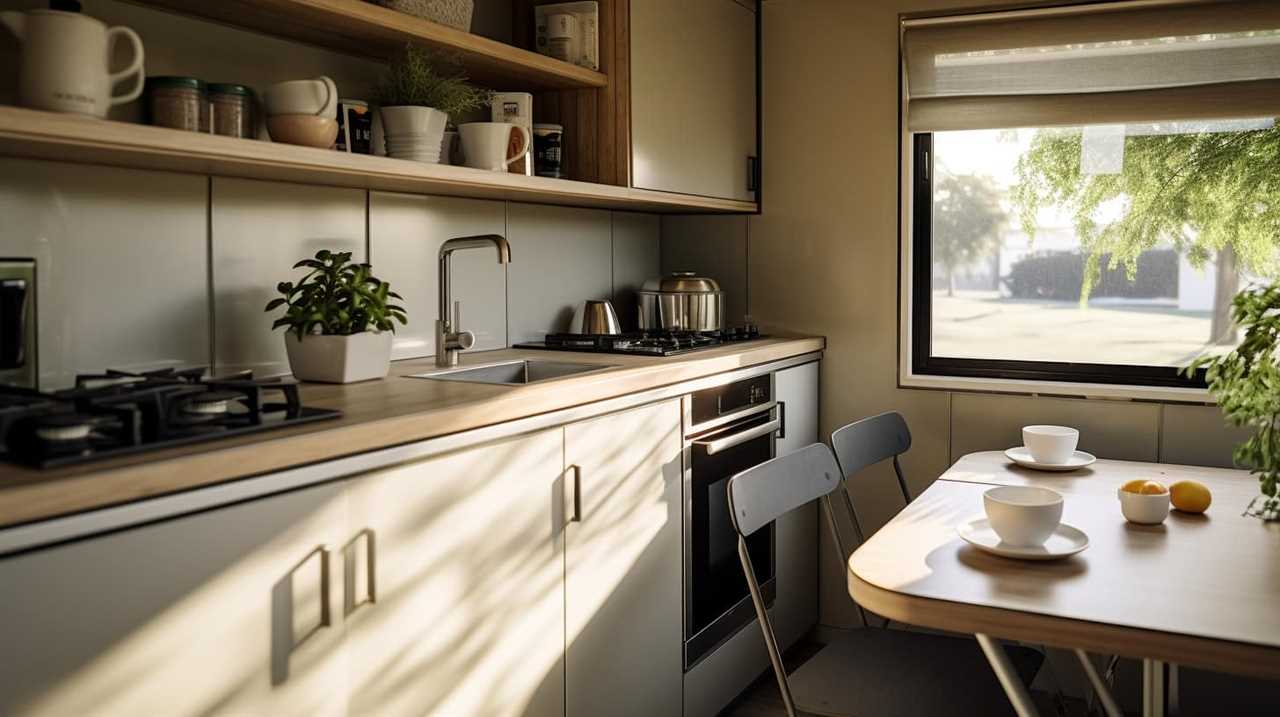
Additionally, observing the behavior of the bugs can provide valuable information. Some bugs are more active during the day, while others are nocturnal. Some bugs may prefer certain areas of the house, such as the kitchen or bathroom.
If you’re unsure about the type of bug in your house, it’s advisable to consult with professional exterminators who’ve the expertise to accurately identify and eliminate the pests.
Understanding the Common Causes of Bug Infestations
One of the most common causes of bug infestations is a lack of proper sanitation practices in the home. Understanding bug behavior and knowing their common household bug habitats can help prevent infestations.
Bugs are attracted to food sources, so it’s important to keep the kitchen and dining areas clean and free of crumbs and spills. Regularly emptying and cleaning garbage cans can also deter bugs from entering the home.

Additionally, bugs thrive in warm and moist environments, so it’s important to fix any leaks or damp areas in the house. Cluttered spaces provide hiding spots for bugs, so keeping the home organized and decluttered can help minimize their presence.
Natural Remedies to Get Rid of Tiny Bugs in Your House
To effectively eliminate tiny bugs in your house, try using natural remedies with ingredients such as vinegar and essential oils. Natural remedies are a great option for those who prefer non-toxic solutions and want to avoid harsh chemicals.
One effective natural remedy is using herbal insecticides. These insecticides are made from plant-based ingredients and can be sprayed in areas where bugs are commonly found, such as corners, cracks, and crevices.
Another natural remedy to consider is essential oils. Certain essential oils, such as peppermint, lavender, and tea tree oil, have insect-repellent properties. Simply mix a few drops of the essential oil with water and spray it around your house to deter bugs.
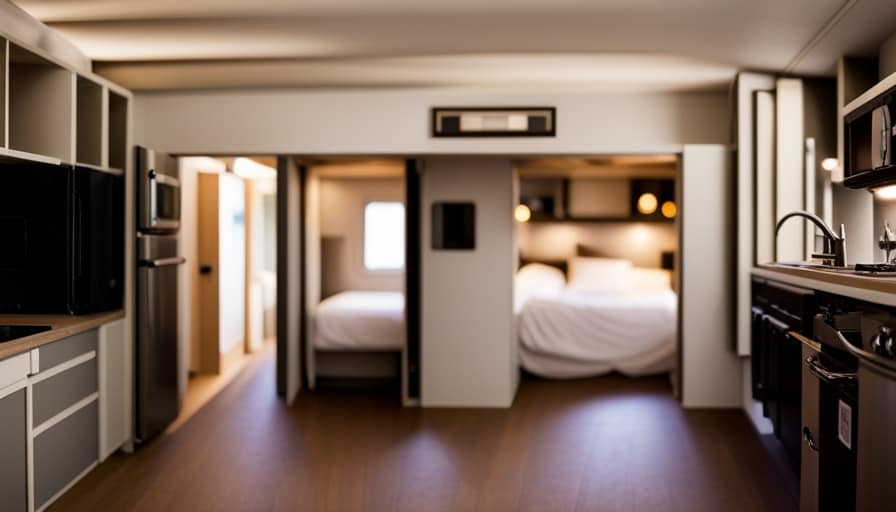
These natural remedies can be a safe and effective way to get rid of tiny bugs in your house.
Chemical Treatments for Eliminating Tiny Bugs
There are several effective chemical treatments available to eliminate tiny bugs in your house. When it comes to pest control methods, using insecticides is a common and efficient approach. There are various types of insecticides on the market, each with its own advantages and disadvantages.
It’s important to compare different insecticides to determine which one is best suited for your needs. Some insecticides target specific bugs, while others have a broad spectrum of effectiveness. Additionally, consider the application method and the duration of effectiveness. Some insecticides require direct contact with the bugs, while others can be used as a residual treatment.
It’s also essential to follow the safety instructions provided by the manufacturer when using chemical treatments to ensure the well-being of both humans and pets in your home.
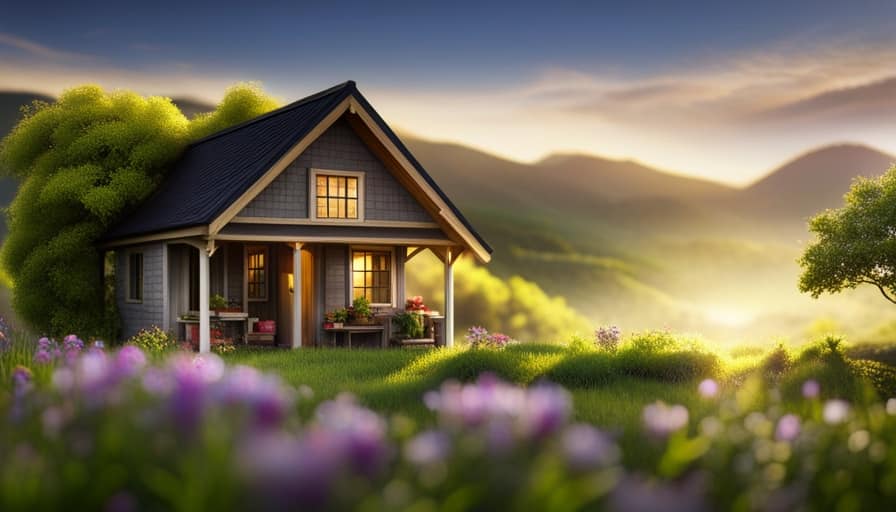
Preventing Future Bug Infestations in Your Home
I’ll make sure to regularly clean and seal any cracks in my house to keep bugs from coming in. Effective cleaning techniques are crucial in preventing bug infestations and creating a bug-free environment. Maintaining a clean and tidy home is essential to minimize the presence of bugs. Regularly vacuuming carpets and upholstery, sweeping and mopping floors, and wiping down surfaces will help eliminate any crumbs or food particles that may attract bugs. Additionally, proper food storage is essential to prevent bugs from being attracted to your kitchen. Keeping food in sealed containers and promptly cleaning up spills or crumbs will deter bugs from entering your home. Regularly inspecting and repairing any cracks or gaps in windows, doors, and walls will also help prevent bugs from finding their way inside.
| Cleaning Techniques | Maintenance Tips |
|---|---|
| Vacuum carpets and upholstery | Inspect and repair cracks or gaps |
| Sweep and mop floors | Properly store food to deter bugs |
| Wipe down surfaces | Regularly clean and seal cracks |
| Dispose of trash regularly | Keep a tidy and clutter-free home |
Frequently Asked Questions
Can These Tiny Bugs Cause Any Harm to Humans or Pets?
I’m not sure about the specific bugs in your house, but some tiny bugs can cause harm to humans or pets. It’s important to address the bug infestation promptly to protect your health and take preventive measures to keep them out.
How Long Does It Typically Take for Natural Remedies to Effectively Get Rid of Tiny Bugs?
It typically takes a few weeks for natural remedies to effectively eliminate tiny bugs. However, it’s important to note that results may vary. As for side effects, natural remedies are generally safe for humans and pets.
What Are Some Signs That Indicate a Bug Infestation in the House?
Signs of a bug infestation in the house include seeing live or dead bugs, finding their droppings or eggs, and noticing damage to furniture or walls. Preventing bug infestations involves keeping a clean and tidy home, sealing entry points, and using insect repellents.
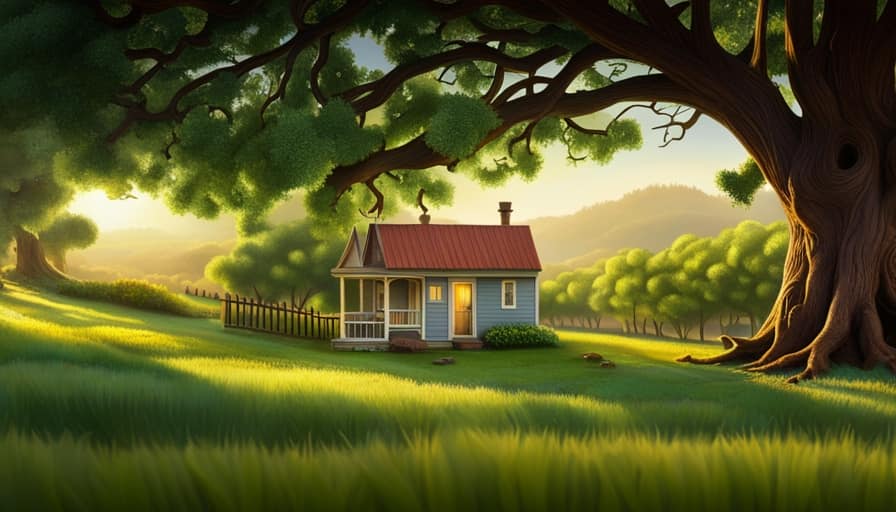
Are There Any Specific Areas in the House Where These Tiny Bugs Are Commonly Found?
In my experience, tiny bugs tend to hide in common areas like kitchen cabinets, bathrooms, and near windows. To prevent them, I recommend regular cleaning, sealing cracks, and keeping food stored properly.
Can Certain Weather Conditions or Changes in the Environment Attract These Tiny Bugs Into the House?
Certain weather conditions or changes in the environment can attract these tiny bugs into the house. Factors like warm and humid weather, open windows, and presence of organic matter can make your home more inviting for them.
Conclusion
In conclusion, while it can be frustrating to deal with tiny bugs in your house, there are effective ways to get rid of them.
By identifying the types of bugs and understanding the common causes of infestations, you can take natural or chemical treatments to eliminate them.

Additionally, taking preventive measures can help to avoid future bug infestations.
Remember, with the right knowledge and strategies, you can create a bug-free environment in your home.
I’m Theodore, and I love tiny houses. In fact, I’m the author of Tiny House 43, a book about tiny houses that are also tree houses. I think they’re magical places where imaginations can run wild and adventures are just waiting to happen.
While tree houses are often associated with childhood, they can be the perfect adult retreat. They offer a cozy space to relax and unwind, surrounded by nature. And since they’re typically built on stilts or raised platforms, they offer stunning views that traditional homes simply can’t match.
If you’re looking for a unique and romantic getaway, a tree house tiny house might just be the perfect option.
-

 Beginners Guides2 weeks ago
Beginners Guides2 weeks agoHow To Buy A Tesla Tiny House
-

 Energy Efficiency2 months ago
Energy Efficiency2 months agoBest Tiny Homes For Cold Climates
-

 Beginners Guides1 week ago
Beginners Guides1 week agoTiny House Nation Where Are They Now Stephanie
-

 Tiny House Resources (e.g., legalities, cost, insurance, FAQs)2 months ago
Tiny House Resources (e.g., legalities, cost, insurance, FAQs)2 months agoDo Tiny Homes Need Planning Permission?
-

 Beginners Guides3 weeks ago
Beginners Guides3 weeks agoFrom The Show Tiny House Nation How Many Keep Their Tiny House?
-

 Beginners Guides2 months ago
Beginners Guides2 months agoUsing a Climbing Net For Treehouse Construction
-

 Beginners Guides2 months ago
Beginners Guides2 months agoHow to Build a Treehouse Without Drilling Into the Tree
-

 Beginners Guides3 weeks ago
Beginners Guides3 weeks agoTiny House Nation Who Pays For The Houses






